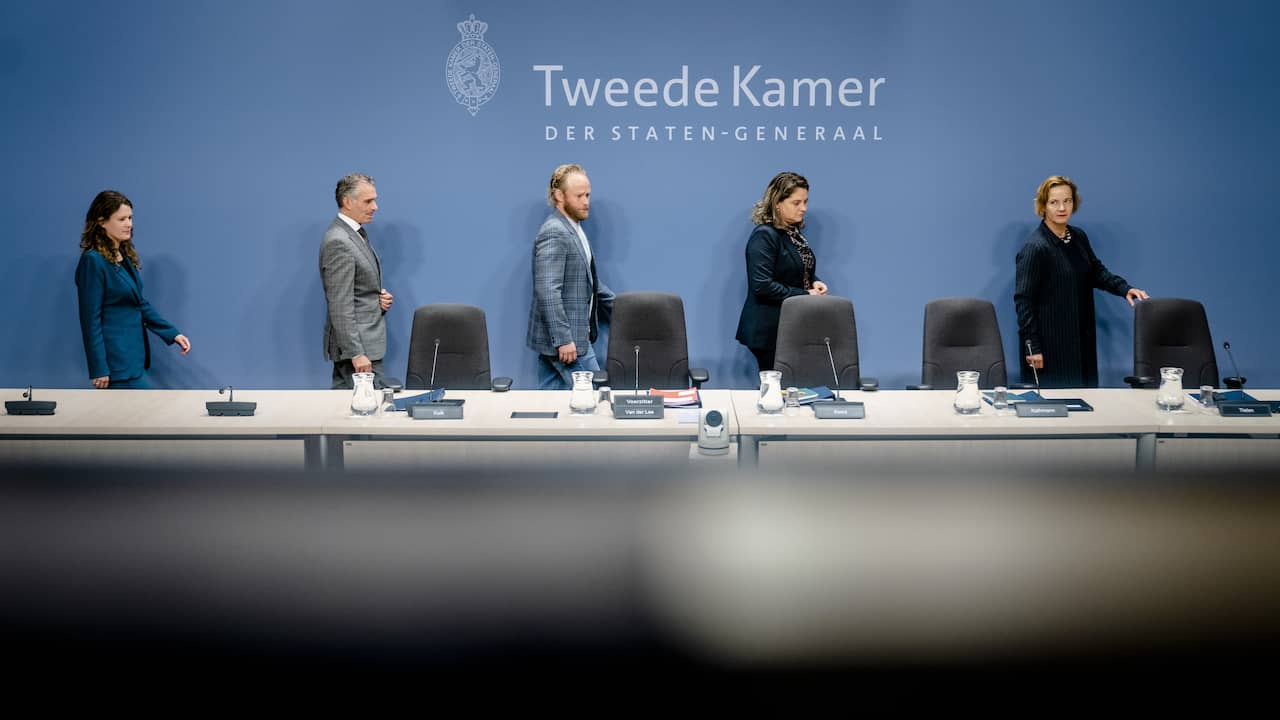The consolidation of damaged homes in the area of the earthquake is not yet proceeding smoothly. The former director of the executive organization, Peter Spijkerman, thinks it possible that all buildings will be strengthened by 2028. But that it takes too long frustrates him. Spijkerman was questioned on Thursday by the commission of inquiry which is investigating the extraction of the gas.
In total, more than 27,000 potentially unsafe addresses need to be evaluated. State mining supervision (SodM) warned in June that the operation will not be completed in 2028 at the current rate. Some 650 buildings were reinforced last year.
However, Spijkerman thinks there is a good chance that this goal will be achieved. But he believes the way they evaluate will help them capture the group that probably needs strengthening first, he expects. Although, according to Spijkerman, “crazy big things” shouldn’t happen, like opening the gas tap further or a very strong earthquake.
Spijkerman was appointed director of the National Coordinator Groningen (NCG) in 2018. Previously, this was nothing more than a management organization, but in Spijkerman’s time the NCG became the organization that actually had to carry out the reinforcements. The Nederlandse Aardolie Maatschappij (NAM) was excluded from the trial and the state has since assumed public responsibility.
The pessimism of the Groningers contrasts with the optimism of Spijkerman. Why are they disappointed, the committee asks? “Many houses have simply not been reinforced yet. Then it is logical that they are very dissatisfied, but I cannot break an iron with my hands”, replies the former director.
Spijkerman thinks the Groningers are right. “Obviously it takes too long. This is also my frustration, which has stuck under my skin.”
The reinforcement operation
- Total working stock: more than 27,000 addresses.
- Completed: around 6,000 addresses.
- Of these 6,000 addresses, approximately 2,600 had to be strengthened.
- At more than 8,000 addresses, registration and evaluation are not yet ready.
- There are more than 10,000 addresses in the design phase.
–
–
–
Other addresses in the list?
In his interrogation, Spijkerman also explains that the NCG does not yet have a complete view of the reinforcement operation. There are still about eight thousand assessments to be made. Additionally, addresses can still be added to this list.
Spijkerman is also very concerned about the more than ten thousand addresses that are still on the list to be addressed. This approach is stalled due to ongoing revaluations.
Two reorganizations have also delayed the reinforcement operation in recent years, the former director says. Furthermore, according to Spijkerman, the numerous political changes have not helped. “It happened with good intentions, but as an artist I need to rest.”
The president of the counter for the settlement of damages contradicts the criticism
In the morning, before the interview with Spijkerman, the committee discussed the complaints handling process. Bas Kortmann, president of the Groningen Mining Damage Institute (IMG) had to testify. The IMG is the independent and independent administrative body that manages the damage, as the NAM no longer has a role.
IMG, formerly the Groningen Temporary Committee on Mining Damage (TCMG), was established in 2018. The body has now settled around 280,000 claims and paid around € 1.5 billion.
However, there is also a criticism of IMG. The former secretary of the Gasberaad interest group, Susan Top, spoke in her own questioning of “old wine in new bottles”. Kortmann disagrees. She points out that the NAM has only paid 400 million euros in the six years it has dealt with the damage itself.
‘If in doubt, the victim gets the advantage’
Kortmann also finds the criticism that the claims settlement is not handled generously to be unjustified. “We are pushing the limits of the law in many places,” he says. In this way, when in doubt, they give the victim the advantage.
All but one of the IMG assessments are satisfactory. In addition to physical damage, the organ also regulates immaterial damage. People who experience suffering that cannot be expressed in money can claim it.
Many people are dissatisfied with this compensation scheme. According to Kortmann, this is due to the fact that there are wrong expectations. “Not all those who suffer have immaterial damage.”
Kortmann acknowledges that IMG actually still has little power and budget to properly organize claims handling. This is partly due to the fact that the law requires that they only fix damages for which NAM is responsible. Consequently, there is no room for more.
Kortmann gives as an example a street with five houses, four of which have been found to be damaged and can be recovered by the NAM. “A rider will often have the freedom to take them all, but we don’t have that authority.”
–


